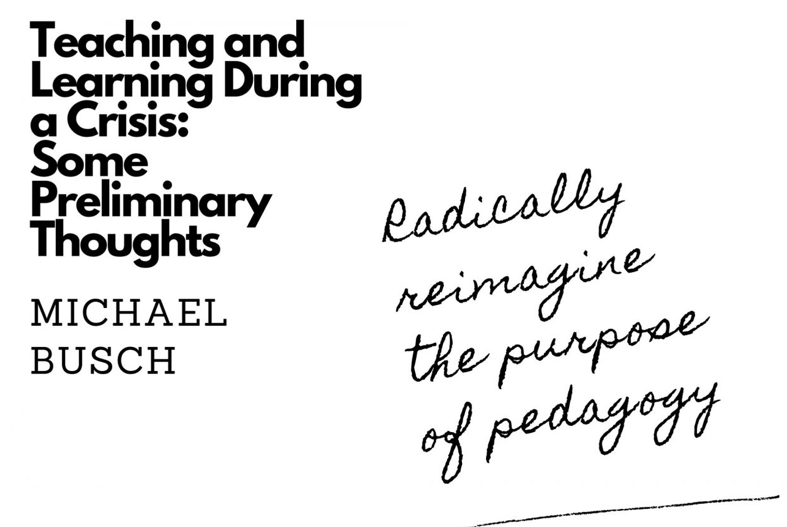

Like many teachers, I’ve been struggling in the face of the Coronavirus crisis to think through what it means to transition from classroom-based education to a so-called “distance learning” model in ways that are productive, meaningful and rooted in a sense of equity.
While I haven’t finalized anything with regard to how my classes will operate from this point forward, I have identified some preliminary “do”s and “don’t”s that are guiding my thinking about what makes the most sense under the circumstances, for my students and for myself.
1. Do not assume all of your students have regular access to online portals. I did an informal survey last week of my students and discovered that not all of them have WiFi at home; some only access a proper computer at work (with printer capabilities), and in at least one case, that job is no longer secure.
2. Create an opt-in, shareable database of student phone numbers and other connection-point data. This may become a crucial source of information and comfort for some students. My plan is to break up my students into “teams,” not for the purposes of doing work, necessarily, but for mutual support and connection. The idea here is that, for those who choose to participate, the teams will be responsible for checking in on each other, sharing class and other information, and cultivating a sense of solidarity during a scary and uncertain time.
3. Fuck grades. You didn’t sign up for an online course, and neither did the students. My own inclination is to give everyone an automatic A unless a student really, truly deserves less (a scenario which itself seems hard to imagine). Our goal here should be to reduce anxiety and unnecessary work. In a way, we have a great opportunity to radically reimagine the purpose of pedagogy. I’m not speaking here of the format, but the basic principles. Ask yourself: if grades were totally off the table, how would you design a learning experience for your students. Then? Do that.
4. Communicate as much as you can. I’ve been trying to check in every couple days with my classes (which I lump into one big blast) with information and reassurance. From the responses, students seem to appreciate it.
5. Plan for illness. There is a decent probability that you and/or some of your students will be exposed to Coronavirus. A question I’ve asked myself: what happens then? Is there a contingency plan in place if you or your students are incapacitated? This seems like a question we should all spend time thinking about.
6. Pacing is everything. There’s a long way to go before the end of the semester—on the calendar and in our heads. I’ve been trying to work out a calendar that offers structure and a reasonable tempo. It won’t be perfect, but my hunch is that time and thought invested in scaffolding an even pace now will pay dividends later.
There’s no clear way forward here, and existing models of distance learning don’t fully account for the details of our current predicament. As a result, I expect we’re all going to be in for a bumpy ride. Our jobs as educators is to smooth the way forward as much as possible, and plan, to the extent we’re able, to be a continued source of information, support, and assurance for students throughout.





